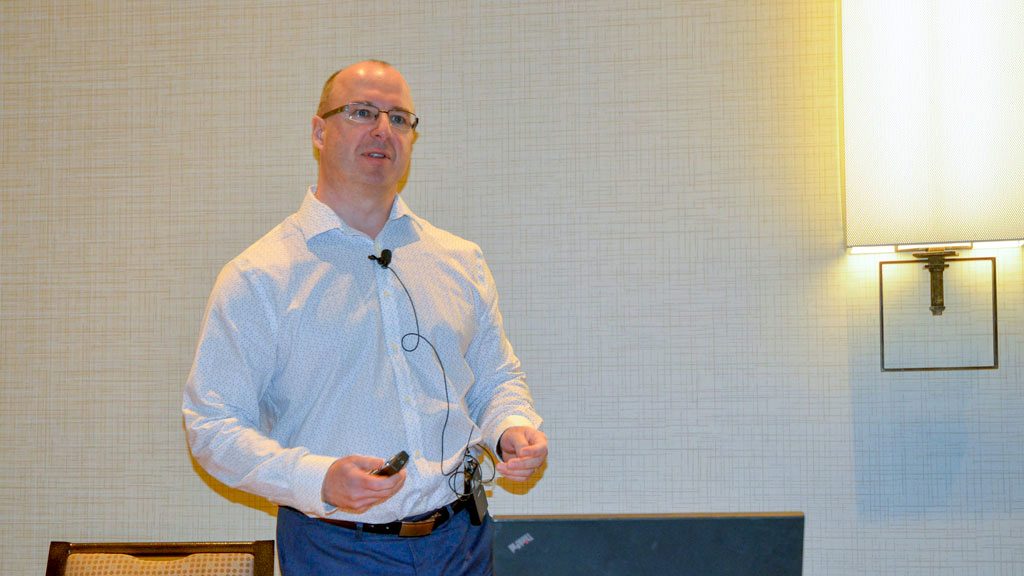On a scale of one to 10 where would you rate your organizations psychological health and safety? How would your average employee rate your organizations mental health score? What is one small step you can do to raise that score?
These were some of the questions asked by Paul Radkowski, CEO and clinical director of the Life Recovery Program (LRP), during a presentation on at the Ontario General Contractors Association Symposium held recently in Blue Mountain, Ont.
The presentation was entitled Healthy Minds, Health Workplace — Psychological Health and Safety in the Construction Industry.
“If you thought of something you can do, that is now an action plan, put it in place and see what happens,” Radkowski told the audience following the presentation.
“We often fear what we don’t understand. Mental health and addiction issues create a lot of fear and misunderstanding and hopefully you have somewhat of a better understanding, more awareness. If you need help get help.”
The LRP is a trauma-informed psycho-education and support to people with addiction and mental health issues, as well as their friends and family.
“The reality is half of us will have two or more of these concerns within your lifetime,” said Radkowski.
“These issues impact all of us either directly or indirectly but we don’t talk about it because of fear, shame or stigma. Most people wait six to 23 years to seek help if they seek help at all.”
Addiction is a huge cost driver. Construction has the second highest substance use as an industry and the highest fatality rate due to substance abuse.
According to the Contractor Safety Assessment Program problem drinkers are two to three times more likely to have industrial accidents, make more than twice as many workers’ compensation claims and are absent 50 per cent more often. Construction also has the highest rate of suicide.
“The workplace is an important place to centre suicide prevention efforts due to the fact that many adults spend much of their time there,” stated Radkowski, adding efforts can include workplace wellness programs, employee assistance programs, online mental health tools, reduction of stigma toward mental illness and seeking help and increased awareness of mental health issues.
If an employer does have concerns about an employee, they should make sure they have all the facts straight and not jump to conclusions.
It’s about maintaining a safe, secure, productive environment, it’s about treating people fairly
—Paul Radkowski
Life Recovery Program
They need to document what they see including absences and other unacceptable behaviour. If it is determined the employee needs help, Radkowski suggested consulting with a professional and meeting with the employee around job performance.
“If you are an employer, supervisor it’s not about diagnosing these issues or having all the answers,” said Radkowski. “It’s about maintaining a safe, secure, productive environment, it’s about treating people fairly. Be supportive, don’t be accusatory and be ready to refer immediately to resource because sometimes that window when somebody actually admits to having an issue and for them to actually seek help is very limited.”
Radkowski offered tips for changing the organization to prevent job stress including ensuring that the workplace is in line with workers capabilities and resources; designing jobs to provide meaning, stimulation and opportunities for workers to use their skills; clearly defining workers’ roles and responsibilities; giving workers opportunities to participate in decisions and actions affecting their jobs; providing opportunities for social interaction among workers; and establishing work schedules that are compatible with demands and responsibilities outside the job.
Employers can save from $5,000 to $10,000 per employee, per year in average wage replacement, sick leave and prescription drug costs for those who get treatment, according to the Mood Disorders Society of Canada.
Furthermore, every dollar invested in addiction and mental health services saves $7 in health costs and $30 in lost productivity cost, indicates a discussion paper issued by the Ministry of Health and Long-Term Care.
“A healthier population is less costly to serve,” explained Radkowski. “Prevention is key to a more sustainable health system.”
If employers do nothing they risk high turnover, repetitive recruitment costs, training costs related to numerous new employees, high costs for replacement workers or temps, burdening team members who have to take up the slack, increased use of drug plans, disability claims, sick leave and Employee Assistance Program and low productivity, missed deadlines, lost customers and contracts.
Economic benefits to addressing mental health and addiction issues in the workplace include healthy and productive employees, return to work (expediency), reduction in claims and coverage, reduced employee absenteeism/presenteeism and increased employee productivity.
“A better corporate culture means a better competitive advantage,” Radkowski said.
For more information visit https://liferecoveryprogram.com.











Recent Comments
comments for this post are closed